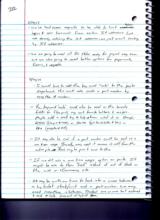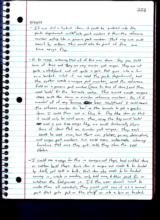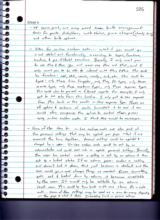|
Basic Assignments
|
Options & Settings
|
Main Time Information
|
||||||||||||||||||||||
|
|
|
|
|
||||||
|
||||||
|
|
|
Notes:
|
|
-I would love to add the key word “auto” to the parts department. This would auto create a part number by using the id number. -The keyword “auto” could also be used on the barcode fields for flex grid, my cart favorite buttons, and recipes. Maybe add a small tag to help us know what it is. Example: f19976 (flex grid #9976) of FAV 320 (cart favorite button #320) or RB14 (recipe/build 14). -It may also be cool if a part number could be set as a one-time usage. Basically, once used it removes itself from the active pile. There may be pros and cons to this. -If we did use a one-time usage option on parts. It might be nice to show “sold” instead of out of stock on the web or eCommerce site. -It may be worth our time to look into a cross between a big ticket stock/unit and a part number. We may need something in between. Tracked one on one but entered and sold in bulk. Some sort of hybrid item. -If we did a hybrid item, it could be entered into the part department with an auto part numbers and then the reference number acting like a generic part number. That way we could search by either. This could also be part of the onetime usage flag. -So to recap, assuming that all of this was done. Say you sold tons of items and they are very similar yet unique. They are not quite a stock/unit and not quite a part that goes into a bin or bucket. What it we used the parts department, had the system create a unique part number, used the reference field as a generic part number (same for tons of items) and then used “auto” for the barcode value. This would create unique items with the same or similar reference numbers. So, it I wanted all of my “bronze bear sculptures” I could search the reference number for “bear” or the barcode to get a specific item. I could then use a flag to flag the item so that it could only be used one. Thus, using the key word “auto” and a one-time usage flag, we could technically show tons of items that are similar yet unique. They each could be used once, have their own photos, prices, descriptions, and unique part numbers. We could even automate clean-up functions that once they get sold, they show the sold status. -I could see a usage for this in consignment shops, hand crafted items, or custom build shops. Each item is unique and needs to be treated by itself, yet sold in bulk. Each item also needs to be tracked coming in, while in inventory, only sold once, and then paid for or whatever the final process is. If the user doesn’t want to make them all individuals, they could just run it as a normal part that gets put on the shelf or into a bin or bucket. -From Post-it note: auto part numbers and auto one time usage options – basically, when used, they inactivate themselves. -At some point, we may need some bulk management tools for parts. Hide/show, web status, price changes (already done) and other bulk options. -Idea for in-line custom code… what if you could go in and detail out functionality according to types, functions, locations, and pre-filtered searches. Basically, I only want you to see this and this. You will never see this and this, and I only want you to be able to interact with this and this. This could be functions: add, edit, search, verify, lock, etc. This could be by types: only these time templates, only these PO types, only these invoice types, only these customer types, only these expense types. This could also be pre-set or filtered reports. For example: I only get to see sales from this location. I only get to see expenses from this bank or this vendor or this expense type. These are all options and criteria of sorts. Wouldn’t it be cool if we could allow companies the option to control these pieces using in-line custom code. I think this would be awesome. -Some of the ideas for in-line custom code are also part of the personal settings that may be applied per page. What if we married the two together. Personal settings could be updated and changed by a user. In-line custom code could be set by an administrator and could over rule or update personal settings. Basically, the user has control unless a setting is set by an admin and then set to a locked status. If an admin person makes a setting and doesn’t lock it down, that just becomes a default and the user could go in and change things as needed. Once something gets set and locked down by admin, it becomes un-editable by the user. It would only be editable by an admin level user. This could be two birds with one stone. AS a side note… some of the settings may be used as a one-to-many depending on the page and what it does. Interesting twist on personal settings. -It sure would be nice to have the main system player’s home pages in a graphical format. Show the options, flow, permissions, settings, in-line custom code, special reports, and training specific to the task at hand. Be it: invoice homepage, parts homepage, deposit homepage, vendors homepage, etc. -I’m starting to see a big need for the customer gift cards, in-store credit and loyalty points. Also being able to re-load, add, subtract, use, etc. |





